Chairman History
The Department of Anesthesiology and Pain Management was officially formed in 1955 under the direction of Dr. Jenkins. Currently, under the direction of Dr. Stephen Kimatian, the Department has certainly changed over the past six decades. Please enjoy profiles of each of the chairmen that have helped build the department into the strong Anesthesiology and Pain Management Department it is today.
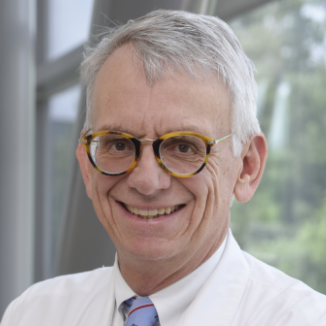
Charles Whitten, M.D., who goes by the nickname "Chuck" was born in Boonville, Missouri on February 21, 1958. His parents, Charles and Dorothy Whitten, were both school teachers in the Missouri Public School System. He graduated valedictorian of his class in the Boonville High School. Although his inspiration into medicine came from his family dentist and an orthopedic surgeon who was a friend of the family, he earned a degree in electrical and biomedical engineering from Southern Methodist University in Dallas, magna cum laude.
While a student, he worked part time in the operating room at Baylor Hospital, where he became familiar with the work of the anesthesiologists. Dr. Whitten was accepted into UT Southwestern Medical School, determined to become a cardiologist because "the heart is an electrical organ." He remembers being amused and inspired by Dr. Ed Johnson's remarks to the new students. ERJ was assistant dean for student affairs at the time. Dr. Whitten took an elective clerkship on anesthesiology and met Dr. Jenkins during one of the teaching conferences. He found that anesthesiologists deal every day with things that are of interest to an engineer: monitors, machines, the heart and that other electrical organ, the brain. His decision to become an anesthesiologist has benefited and inspired many since then. He chose Baylor University Medical Center for his internship and won the Joe Billy Wood Prize for his presentation, "Orthotopic cardiac transplantation, an overview." The prize was named for pioneer anesthesiologist, Dr. JB Wood, who came to Baylor Hospital shortly after World War II and was the departmental chairman for many years.
Following his residency at Parkland, Dr. Whitten served a fellowship in anesthesia for transplant surgery at Baylor Hospital. He became interested in the coagulopathies associated with liver transplants and the use of the thromboelastogram as a monitor for clotting problems. He continues his interest in coagulopathies and considers that his most significant scientific contributions have been studies of the coagulopathies in surgical and obstetrical patients and the effects of aprotinin and desmopressin.
Dr. Whitten joined the faculty of UT Southwestern at the completion of his residency in 1988; working with Dr. Terry Latson in the division of anesthesia for cardiovascular/thoracic surgery. He became the chief of the division in 1993. The following year he was promoted to associate professor and in 1996 he became director of the division of anesthesia at Parkland Hospital. This is the largest and busiest division in the department. Fortunately he has not lost his interest in students. He has served as senior research project advisor for undergraduate engineering students at SMU since 1988. Of the seventeen students he has mentored, many have become medical doctors and a few have become anesthesiologists. He was the chief recruiting officer for the residency program from 1992 to 1998. The fact that the residency has filled with high quality candidates in the match each year during intervals between permanent chairmen is testimony to his charisma and the quality of his recruiting efforts.
He has participated in the medical student's Introduction to Clinical Medicine course since 1995. By becoming a teacher, Dr. Whitten has fulfilled the legacy of his parents and grandparents, who were teachers. His interest in the welfare of students extends to his wife, Cheri, whom he met and married while he was a fellow at Baylor Hospital. Dr. Landers appointed Dr. Whitten to the MT Pepper Jenkins Professorship in 1998. Dr. Landers stated, "When we consider Chuck's commitment to medical education, his innovative research work, and his leadership in clinical and academic medicine, we must agree that he manifests the finest attributes of Pepper Jenkins and will serve the program well as the MT Pepper Jenkins Professor."
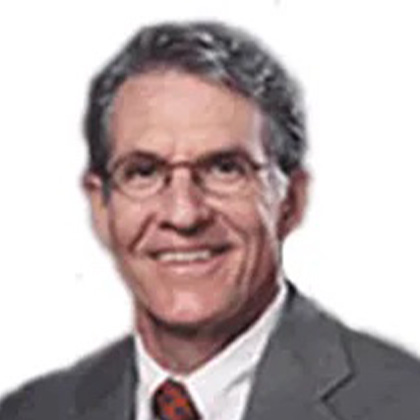
The search for a new chairman was brief and William Johnston, M.D. became chairman in December, 2001. Dr Johnston was recruited from the University of Texas Medical Branch in Galveston, Texas where he served as Chief of Cardiothoracic Anesthesia and Vice Chair of Academic Affairs. He was born in Jackson, Mississippi and completed both undergraduate and medical education at Duke University, where he earned highest academic honors (Phi Beta Kappa, Cum Laude, and Alpha Omega Alpha). After completing two years of surgery residency at Washington University Medical Center - Barnes Hospital, he decided to switch to anesthesiology to train in critical care medicine. He completed his residency in anesthesiology at the Massachusetts General Hospital in Boston, Massachusetts in 1979 followed by fellowships in both critical care medicine and cardiothoracic anesthesiology. He joined the faculty at Wake Forest University Medical Center in Winston-Salem, North Carolina for twelve years where he practiced cardiothoracic anesthesia, critical care medicine, and developed an animal research laboratory. Dr. Johnston received research funding from the American Lung Association, the United Way, the American Heart Association, the National Institutes of Health, and the Sealy Smith Research Foundation. His areas of interest included hypoxic pulmonary vasoconstriction, cardiac tamponade, ischemic right ventricular failure, and neurological injury during cardiopulmonary bypass.
During his five years at UT Southwestern, his success in leadership, research and academics led the department through a tremendous period of growth. We developed a consolidated internship program and restructured the residency with an overhaul of the educational program. In addition, we initiated collaboration with Methodist Hospital for resident training opportunities, recruited a clinical scientist investigator and established laboratory research on campus, renovated the anesthesiology offices at Parkland. Finally, we developed and expanded clinical services within the university by adding the acute pain service, the Moncrief Pain Center, the St Paul University Hospital anesthesiology service, and ICU services at Parkland and the Dallas VA. He improved the residents' scores on the national board and in-training examinations through better didactics and encouraged reading. Dr. Johnston's most significant achievement during his career has been the education of residents and fellows and inspiring them to become better clinicians.
He now resides in Belton, TX with his wife Lynn and is presently Associate Chair and Vice-Chair of Academic Affairs, Department of Anesthesiology, Scott & White Memorial Hospital. Dr. Johnston has two sons; Elliott, who is a computer animator for Disney Studios in Salt Lake City, Utah; and Forrest, who recently graduated from the Baylor College of Medicine and is currently a surgical resident at The University of Virginia in Charlottesville.
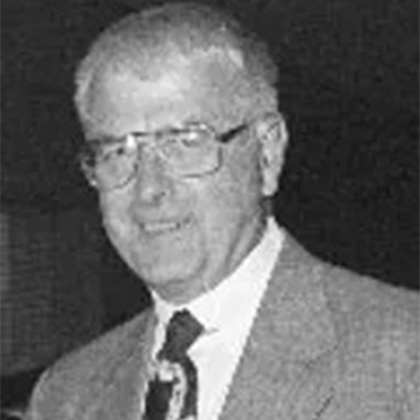
In 1994, Dennis Landers, M.D. became chairman. Dr. Landers was born in Rapid City, South Dakota and moved as a boy to Lexington, Nebraska. He is a graduate of the combined MD/PhD program at the University of Nebraska, Omaha. He began as a pathology resident but soon switched to family medicine, earning his board certification in 1973. At age 42 he began a residency in anesthesiology at the University of Utah, the same day that his daughter became a freshman in college. Immediately on completion of residency he became the chairman of anesthesiology at the University of Nebraska, a program that was on probation. He successfully turned the program around and established an excellent reputation in anesthesia for transplant surgery and research in blood transfusions. At Southwestern he was faced with another program on probation.
The residency program was too large and was service driven. He reduced the size of the residency program and improved the quality of didactic teaching. He added nurse anesthetists in an anesthesia care team mode of practice to satisfy the service requirements, especially at Parkland Hospital. This was a monumental change. Dr. Jenkins was steadfastly committed to all physician anesthesia and many of the faculty were opposed to any change. The nurse anesthetists employed by Dr. Landers were the first in Parkland in 40 years. Having completed a highly successful tenure, Dr. Landers retired in 2001 to move to Utah to be closer to his grandchildren and the mountains for skiing. Once again, Dr. Edward Johnson became the interim chairman.
Additional details of the lives and careers of Drs. Jenkins, Giesecke, White, Johnson and Landers can be obtained from Anesthesiology at Southwestern, The First Fifty Years. (See Jenkins Alumni Society)
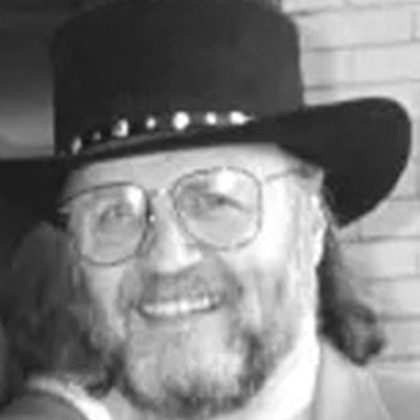
The ever popular Dr. Edward R. Johnson, M.D., known as the "ERJ," followed Dr. White as interim chairman. Dr. Johnson boasts the longest continuous service in the department - 1967 to 2008, when he also became a Professor Emeritus. He is the only one to be chairman twice; first following Dr. White in 1992 and also following Dr. Landers in 2001. He is best known for the quality of his teaching and the simplicity of his approach. He improved medical student teaching and won the Teacher Of The Year Award from the entire senior class three times. One of the most famous of his humorous teachings is the "Nine 'Ps’ of Perfect Anesthesia." These are "Pin Point Pupils, Palpable Peripheral Pulse, and Plentiful Production of Pee." Basically the message, which is cloaked in humor, is to provide enough opioid for good analgesia, to maintain good cerebral perfusion, to maintain good peripheral circulation (slow pulse and good blood pressure) and to give fluids adequate to produce a good urine flow. ERJ was born in Chicago, Illinois in 1938, and graduated from medical school at Northwestern University. He did an internship at Cook County Hospital in Chicago and two years in the Public Health Service in Yuma, Arizona. He then came to UT Southwestern for a residency in anesthesiology. He is married to Lizbeth and together they nurture two beautiful cats.
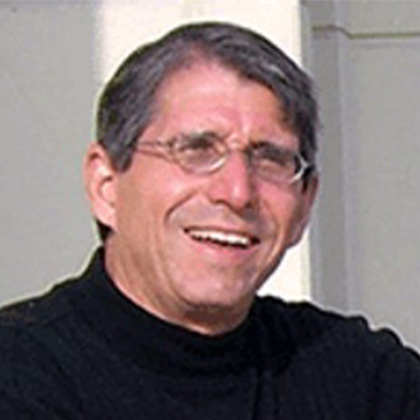
Paul F. White, M.D. served as chairman from July 1992 to April 1993. Under his leadership the Margaret Milam McDermott Chair in Anesthesiology was upgraded to the Margaret Milam McDermott Distinguished Chair in Anesthesiology. In addition, the Eugene McDermott Center for Pain Management was established and the department's name was changed to the "Department of Anesthesiology and Pain Management," emphasizing our expanding role in this important subspecialty field. Because he was already a world renowned researcher, Dr. White greatly expanded the department's capacity for research. He is best known for the introduction of propofol infusions, patient controlled analgesia, the prevention and treatment of post-anesthesia nausea and vomiting, and his work with the Society of Ambulatory Anesthesia (SAMBA), which he served as president.
Dr. White was born in La Mesa, California, the second of five children. He earned a PhD and MD degree at the University of California San Francisco, where he also took his training in anesthesiology. He served on the faculty at Stanford University and at Washington University St. Louis before coming to Dallas. He is married with two daughters.
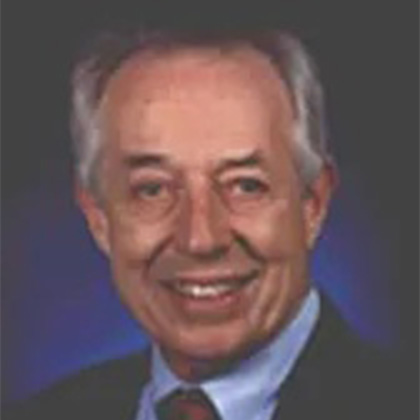
Dr. Jenkins retired from the chair in 1981 and was succeeded by Adolph "Buddy" Giesecke, M.D., who had practiced academic anesthesiology at UT Southwestern affiliated hospitals for 21 years with two interruptions. One year, 1970, was spent as Fulbright Lecturer at Johannes Gutenberg University Mainz, Germany and a second, 1973, as chairman of anesthesiology at UTHSC Houston. He was named the Pepper Jenkins Professor of Anesthesiology and Vice Chairman in 1974. The eleven years of his chairmanship were marked by amazing growth in the department. The residency increased in size, the faculty increased in size and the affiliated hospitals - Parkland Memorial, Dallas Veteran's, Children's Medical Center and Texas Scottish Rite - all added new operating rooms, which required service and forced growth. Southwestern Medical Center opened the new Zale Lipshy University Hospital in 1989. The challenge of ever increasing demand for service was compensated by a fantastic variety of clinical educational opportunities for the residents. All aspects of modern ethical practice were available in the department with no need to leave town.
Working together, Dr. Richard Morris, a fellow in anesthesiology, and Dr. Giesecke discovered the drug interaction between magnesium sulfate, which is routinely used to treat toxemia of pregnancy, and the neuromuscular blocking drugs used during anesthesia for operative deliveries in these patients. In addition, Dr Giesecke promoted improved care of traumatized patients through educational programs. He served as editor of the journal Traumacare, and president of the International Trauma Anesthesia and Critical Care Society, winning its Career Achievement Award. He also served as president of the Texas Society of Anesthesiologists and won its Distinguished Service Award in 2003. Dr. Giesecke stepped out of the chairman's role in 1991 but remained active in the department until 2005, when he became Professor Emeritus. He has been married to his wife, Roni, for 55 years. They have four children and five grandchildren. The third child, Martin, is an anesthesiologist and is now the vice chairman of our department.
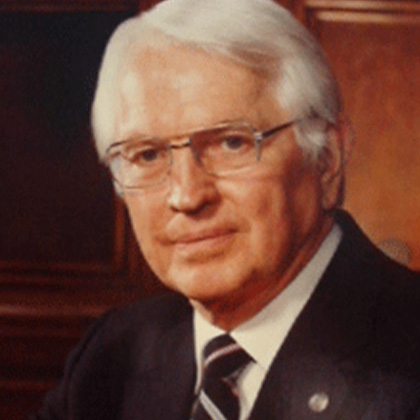
Marion T. "Pepper" Jenkins, M.D. was born in Hughes Springs TX, on February 11, 1917, the second son of a family practitioner, Dr. Homer Jenkins. He received a BS degree from the University of Texas at Austin in 1936 and the MD from UT Medical Branch, Galveston in 1940. He completed a rotating internship at University of Kansas Hospital, Kansas City and married Elizabeth "Betty" Weaver. The marriage lasted 53 years until her death in 1993. He returned to Galveston to begin a residency in internal medicine, which was interrupted by service in the United States Navy in the South Pacific during World War II aboard the troop transport and seaplane tender, the USS Chandeleur. His interest in improved care of the traumatized patient was stimulated by having to care for the wounded marines in the battles of Guadalcanal and Kwajalein. Following the war, in 1946, he began a surgical residency at Parkland Memorial Hospital, which had already established a reputation for excellence in the management of civilian trauma. His mentors in surgery, Drs. Moyer and Hudson, convinced him to take training in anesthesiology and establish a new teaching department in the hospital and Southwestern Medical School.
Dr. Jenkins returned from training at Massachusetts General Hospital under Henry Beecher and became the founder of the division of anesthesiology in the department of surgery in 1948. The division became a separate department in 1955. Dr. Jenkins remained chairman until 1981, a period of 33 years. He and the department achieved greatly during those years. He established the first recovery room in Texas in January 1949. He added Dr. Robert Bruce Dodd to the faculty and gained accreditation for the residency training program in 1950. He affiliated the department with Children's Medical Center in order to improve the pediatric experience for the residents in 1951. He participated in the unsuccessful attempt to resuscitate President Kennedy, who was shot in Dallas on November 22, 1963. His chair was endowed in 1966 by Eugene McDermott, who named it in honor of his wife, The Margaret Milam McDermott Chair in Anesthesiology. This was the fourth endowed chair in anesthesiology in the world. It was upgraded to a Distinguished Chair in 1992.
Dr. Jenkins' most important scientific achievement was the introduction of balanced salt solution (Ringer's Lactate) into clinical practice in 1950. Before this time, surgical fluids consisted of small amounts of D5W and whole blood if the patient was bleeding. Sodium containing solutions were considered contraindicated. After this time balanced salt solutions were indicated and, in fact, were considered life-saving in surgical patients. Dr. Jenkins never claimed to have had this innovative idea alone. He always shared the credit with his surgical colleagues: Ben Wilson, Carl Moyer, and Tom Shires. Dr. Jenkins was widely recognized for this innovation and his work in organized medicine. He became president of the American Society of Anesthesiologists and winner of the society's Distinguished Service Award. He became an honorary Fellow of the Faculty of Anesthetists of the Royal College of Surgeons of London, and the Royal College of Surgeons of Ireland. He was the first anesthesiologist ever to win the Distinguished Service Award of the American Medical Association.
